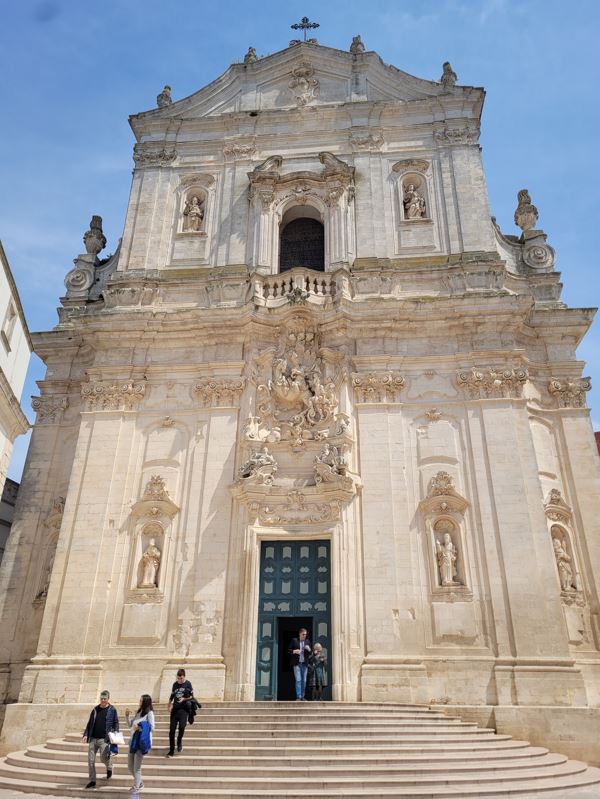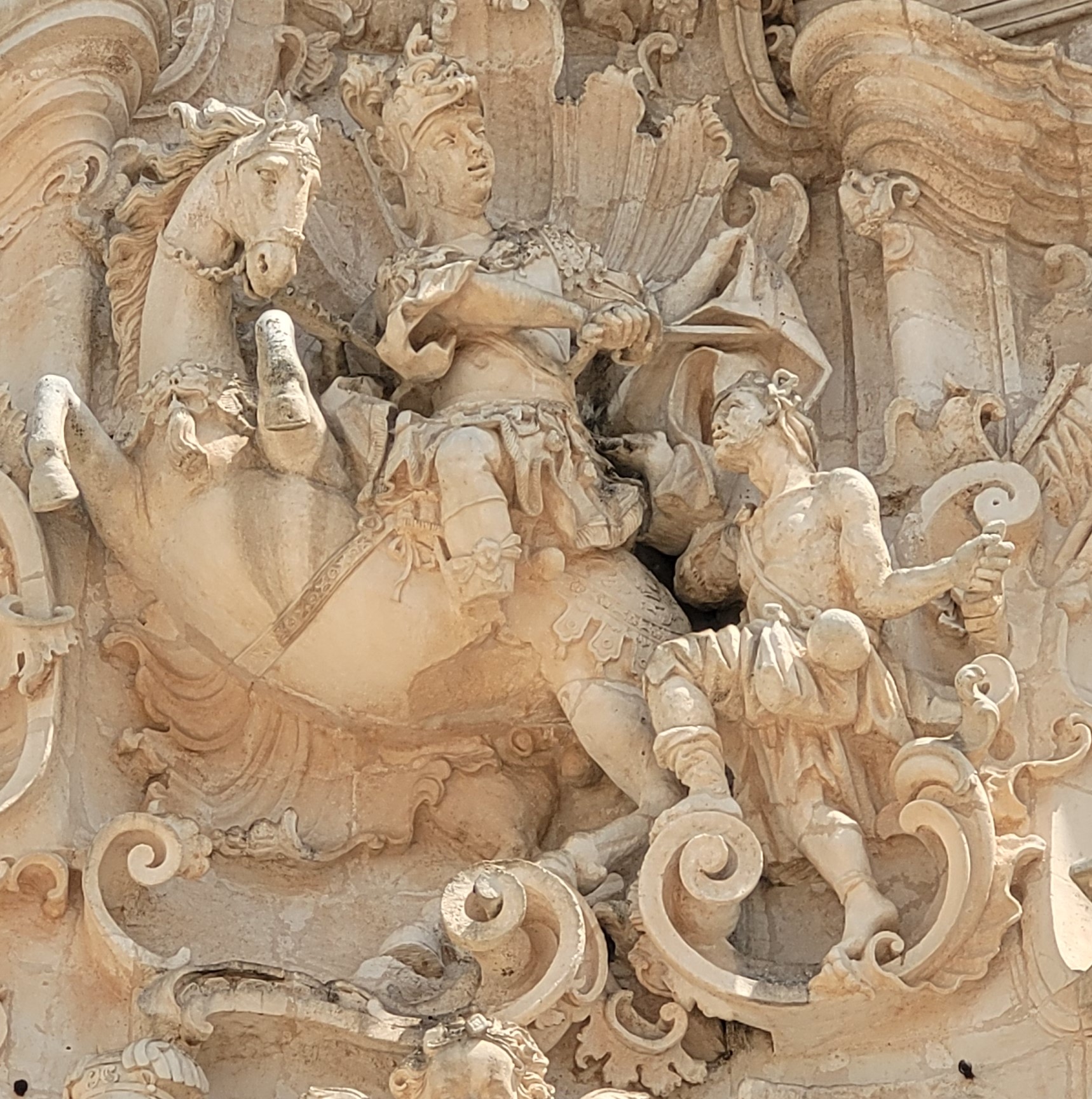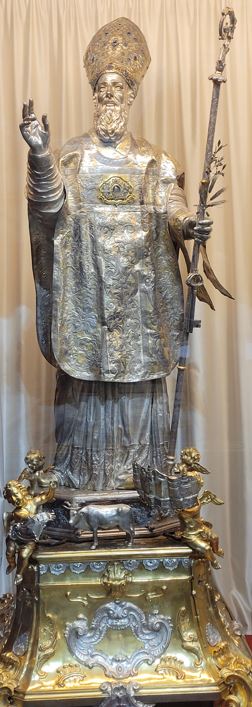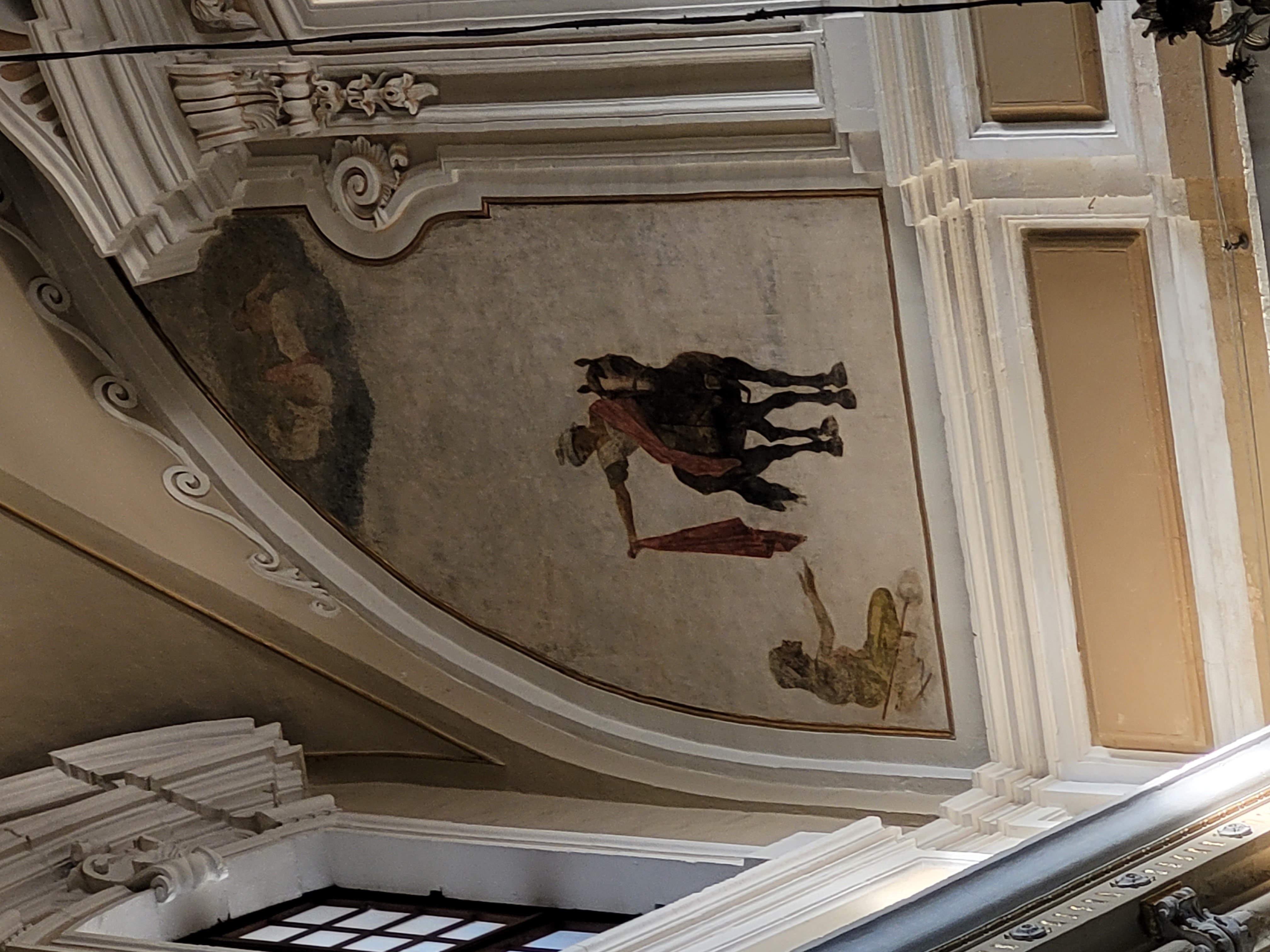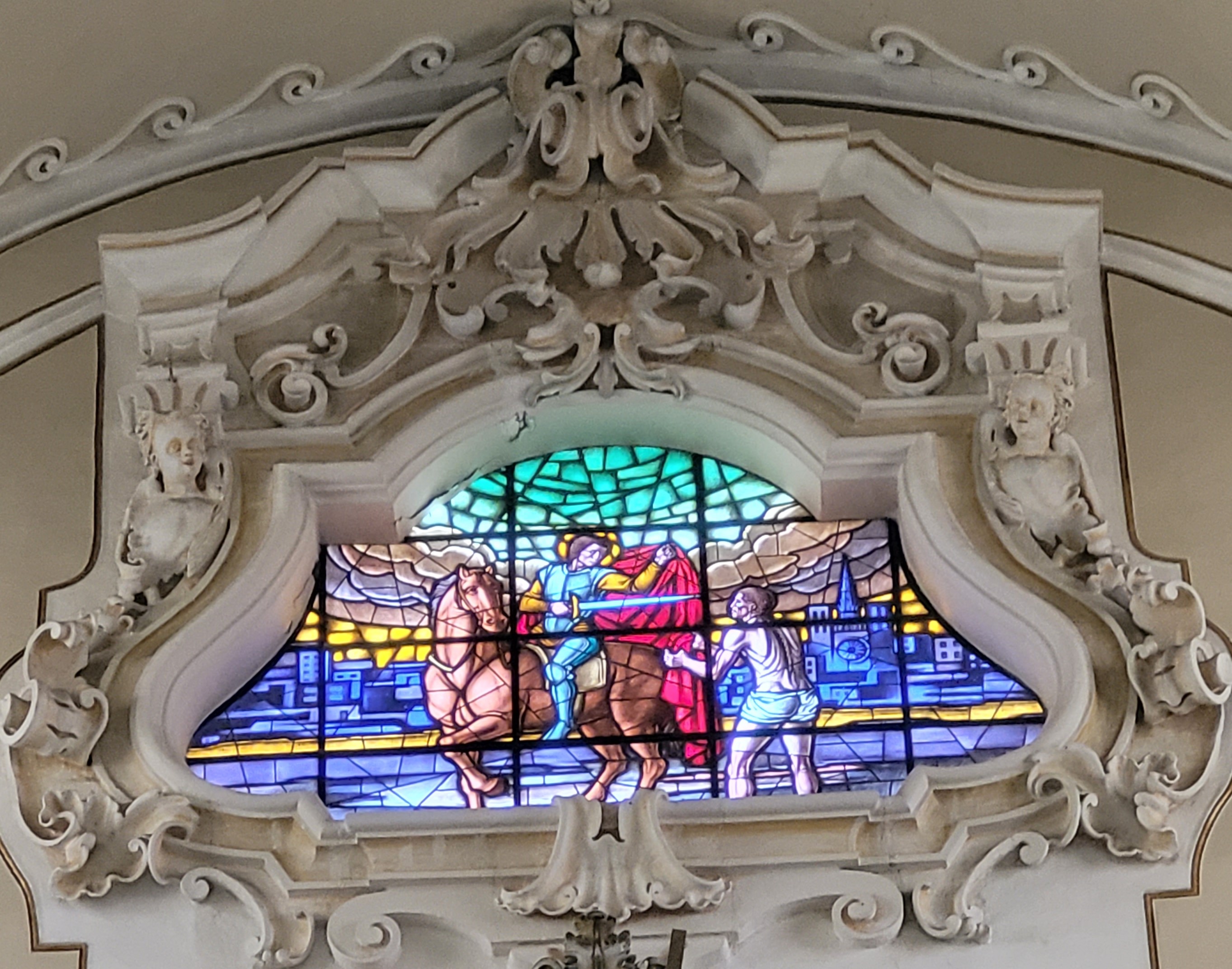San Martino de Martina Franca est construite entre 1747 et 1763 sur les plans de Giovanni Mariani, dans le style baroque, à la demande de l’archi-prêtre Isidoro Chirulli, à l’emplacement d’une ancienne église romane détruite. Elle est consacrée en 1775 et devient une basilique mineure par Jean-Paul II le 22 avril 1998.
Le portail de la façade est surmonté d’un bas-relief de saint Martin de Tours et sainte Comasia les deux patrons de Martina Franca attribué au sculpteur local Angelo Micheli.
Le maître-autel de marbre polychrome, réalisé en 1773 héberge une statue de Saint-Martin dans le style gothique français du début du XIVe siècle, qui était déjà présente dans l’ancienne église.
La statue-reliquaire de saint Martin, dans le chœur de la basilique, qi fait 210 cm de hauteur, est réalisée au XVIIIe siècle par l’argentier napolitain Andrea de Blasio. Le soutien processionnel est ajouté par Marcantonio Cancellieri en argent bosselé et ciselé, cuivre doré, bronze fondu et doré, sur un support de fer et de bois. Le socle est encadré de quatre anges en ronde bosse en bronze doré, portant des fleurs. Un bœuf est présent au centre du socle. C’est un ex-voto offert par les habitants de Martina Franca afin de rappeler les miracles du saint. Saint Martin, représenté en évêque, bénit les fidèles de la main droite et tient sa crosse dans la main gauche, avec trois épis de blé et un rameau d’olivier. Le tout est orné de pierres précieuses. Les saphirs à « l’eau de Sorrento » ont été donné par le duc François II Caracciolo au milieu du XVIIIe siècle.
L’église abrite également trois charités de saint Martin en plus de celle de la façade : une fresque et deux vitraux réalisés par Marcello Avenali en 1956. Le premier vitrail, dans le chœur, présente une charité, tandis que le deuxième, au balcon pontifical, figure la libération de Martina du siège de Cappelletti en 1529, surmonté d’une charité de saint Martin : selon la légende, saint Martin est intervenu le 16 juin 1529 avec saint Antoine de Padoue et une compagnie de cavalerie pour sauver Martina Franca des mercenaires dirigés par Fabrizio Marramaldo lors du siège de l’église Cappelletti.
L’une des quatre porte d’entrée de la ville, à côté du palais ducal, conserve la mémoire de cette légende.
San Martino de Martina Franca was built between 1747 and 1763 on the plans of Giovanni Mariani, in the baroque style, at the request of the archpriest Isidoro Chirulli, on the site of an ancient Romanesque church destroyed. It was consecrated in 1775 and became a minor basilica by John Paul II on April 22, 1998.
The portal of the facade is surmounted by a bas-relief of St. Martin of Tours and St. Comasia the two patrons of Martina Franca attributed to the local sculptor Angelo Micheli.
The polychrome marble high altar, made in 1773, houses a statue of St. Martin in the French Gothic style of the early fourteenth century, which was already present in the old church.
The reliquary statue of St. Martin, in the choir of the basilica, which is 210 cm high, was made in the 18th century by the Neapolitan silversmith Andrea de Blasio. The processional support is added by Marcantonio Cancellieri in embossed and chiseled silver, gilded copper, cast and gilded bronze, on a support of iron and wood. The base is framed by four angels in the round in gilded bronze, carrying flowers. An ox is present in the center of the base. It is an ex-voto offered by the inhabitants of Martina Franca to recall the miracles of the saint. Saint Martin, represented as a bishop, blesses the faithful with his right hand and holds his crosier in his left hand, with three ears of wheat and an olive branch. The whole is decorated with precious stones. The sapphires to the « water of Sorrento » were given by Duke Francesco II Caracciolo in the mid-eighteenth century.
The church also houses three charities of St. Martin in addition to the one on the facade: a fresco and two stained glass windows made by Marcello Avenali in 1956. The first window, in the choir, shows a charity, while the second, in the papal balcony, depicts the liberation of Martina from the siege of Cappelletti in 1529, surmounted by a charity of St. Martin: according to legend, St. Martin intervened on June 16, 1529 with St. Anthony of Padua and a company of cavalry to save Martina Franca from the mercenaries led by Fabrizio Marramaldo during the siege of the Cappelletti church.
One of the four entrance doors of the city, next to the ducal palace, preserves the memory of this legend.

